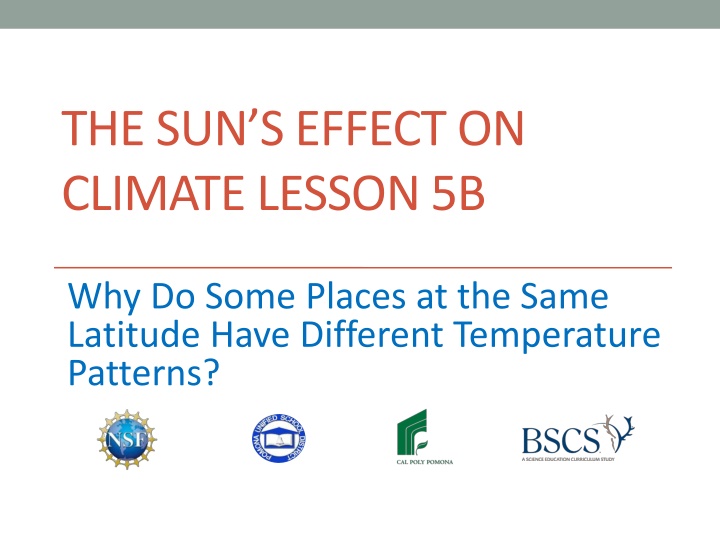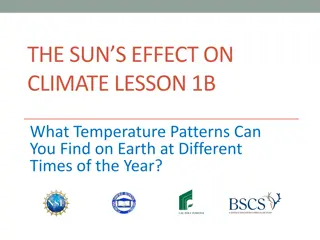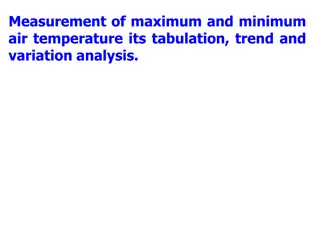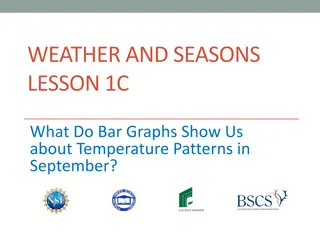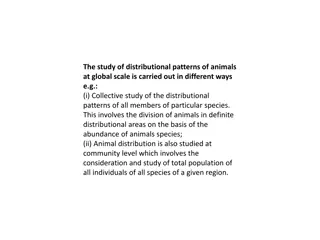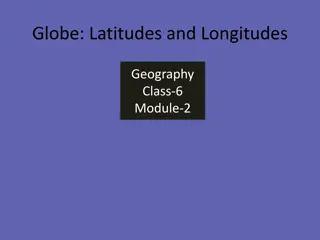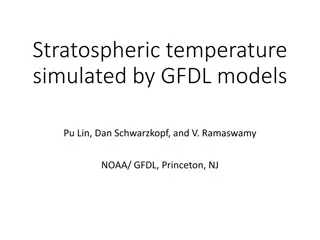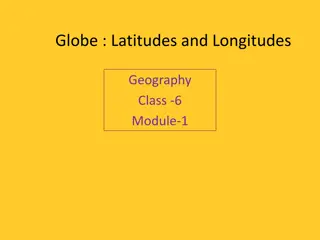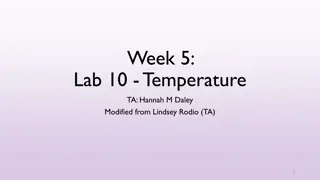Investigating Temperature Variations at Similar Latitudes
In this lesson, students explore why locations at the same latitude can experience different temperature patterns. By analyzing data and considering factors such as proximity to oceans and mountains, students develop an understanding of why latitude alone does not determine temperatures on Earth. The lesson prompts critical thinking about how various geographic features and elevations influence climate variations.
Download Presentation

Please find below an Image/Link to download the presentation.
The content on the website is provided AS IS for your information and personal use only. It may not be sold, licensed, or shared on other websites without obtaining consent from the author.If you encounter any issues during the download, it is possible that the publisher has removed the file from their server.
You are allowed to download the files provided on this website for personal or commercial use, subject to the condition that they are used lawfully. All files are the property of their respective owners.
The content on the website is provided AS IS for your information and personal use only. It may not be sold, licensed, or shared on other websites without obtaining consent from the author.
E N D
Presentation Transcript
THE SUNS EFFECT ON CLIMATE LESSON 5B Why Do Some Places at the Same Latitude Have Different Temperature Patterns?
Last Time In the last lesson, we investigated temperature patterns for three cities at the same latitude. Then based on your line-graph data, you proposed an answer to the focus question, Why do some places at the same latitude have different temperature patterns? What ideas did you come up with? Make sure to include observations and evidence from your line graphs (handout 5.2).
Lesson Focus Question Today we ll continue investigating the focus question from last time: Why do some places at the same latitude have different temperature patterns?
Review: Temperature Data for Three Cities Examine your line-graph data and the temperature patterns you observed and recorded for the three cities on handout 5.2. What temperature patterns would you expect to see in all three cities since they re located at about the same latitude? Why?
Investigating Differences in Temperature Patterns 1. What do you observe about the location of each city on the map? 2. What geographical or physical features do you notice that might account for the different temperature patterns of these cities?
Investigating Differences in Temperature Patterns Here s what we ve observed so far: San Francisco is close to the Pacific Ocean. Colorado Springs is near the Rocky Mountains. St. Louis is in the center of the United States and isn t near the mountains or an ocean. How do you think the location of each city might influence temperature patterns?
Key Science Ideas Not all places at the same latitude have the same average temperatures. Latitude, while important, isn t the only factor that determines the temperatures at a specific location on Earth. Other factors that influence climate and temperature patterns are elevation (how high a location is above sea level) and being near a large body of water like an ocean.
Key Science Ideas These science ideas help explain different temperature patterns around the world: Earth s tilt and the angle of sunlight cause solar radiation to hit certain places more directly and other places less directly. Latitudes closer to the poles generally have cooler temperatures than latitudes closer to the equator. As Earth orbits the Sun, the most direct angles of sunlight reach different parts of Earth at different times of the year. This causes opposite seasons in the Northern and Southern Hemispheres.
Todays Focus Question Why do some places at the same latitude have different temperature patterns? Discuss this question in your small group. Then write your best answer in your science notebook. Be ready to share your ideas with the class.
Lets Summarize! Our unit central question: Why are some places on Earth hotter than others at different times of the year? Discuss this question in your small group and come up with your best answer. In your response, include key science ideas from all of the lessons. Be prepared to share your group s answer with the class.
Next Time How do oceans or other large bodies of water affect temperatures in nearby locations? We ll explore this next time!
